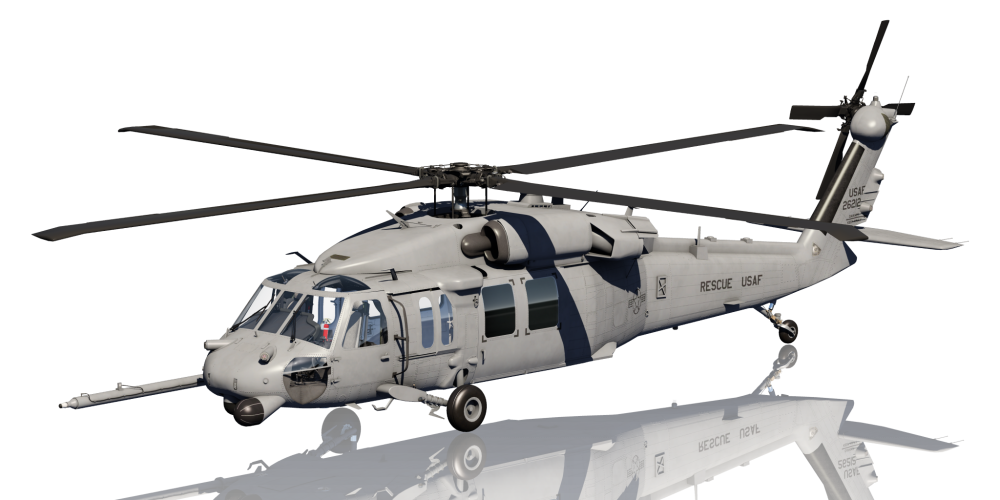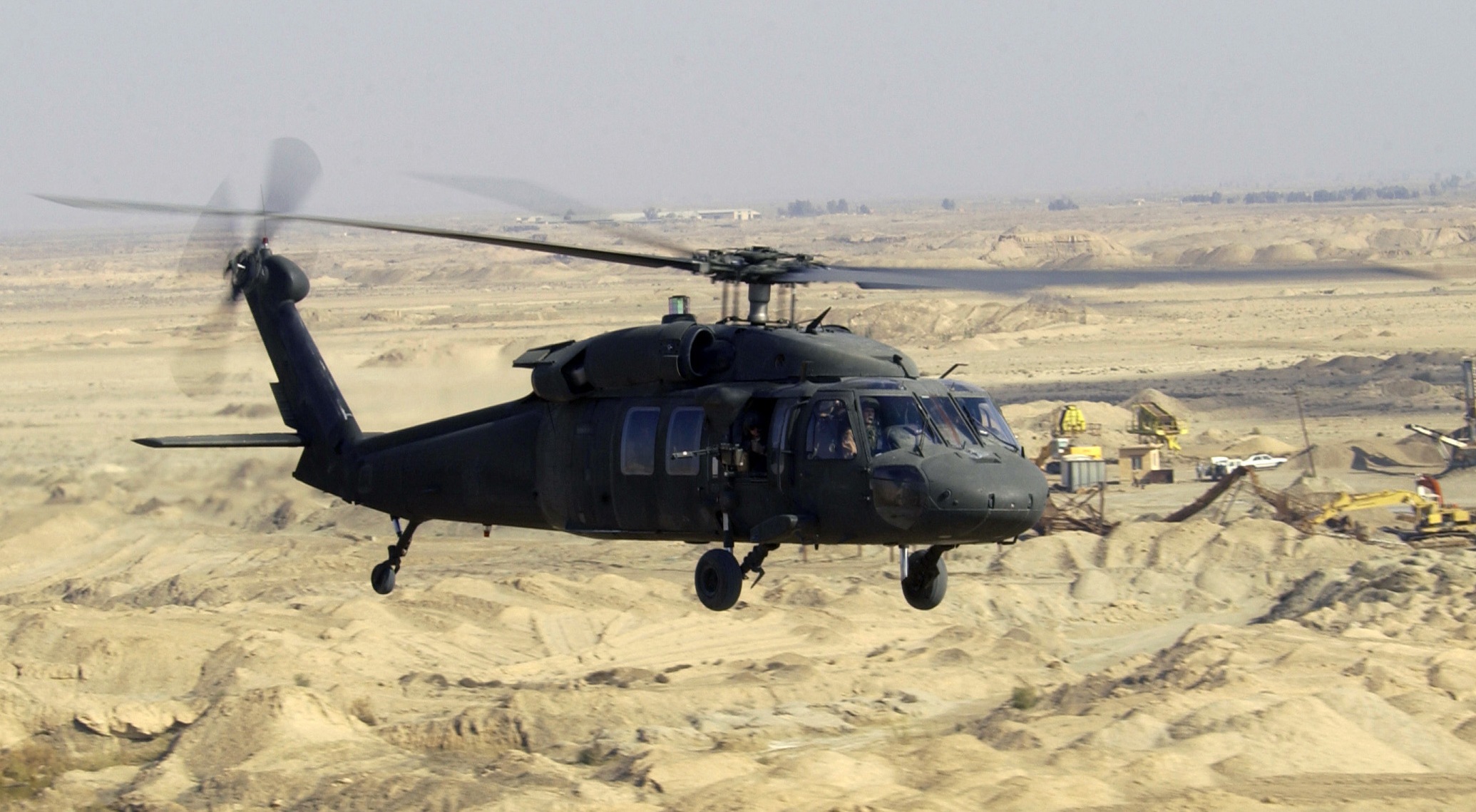The UH 60 Helicopter: Enhancing Movement and Adaptability in Armed Force Missions
The UH 60 Helicopter: Enhancing Movement and Adaptability in Armed Force Missions
Blog Article
UH-60: Advancements in Modern Helicopter Style
The UH-60 helicopter stands as a criteria in modern aeronautics, showcasing considerable innovations in style and innovation that accommodate the evolving needs of army procedures. Its consolidation of innovative products not just improves efficiency yet also addresses important safety problems. Furthermore, the assimilation of sophisticated avionics has actually changed operational abilities, allowing for greater situational recognition and decision-making performance. As we discover the development and essential technologies of the UH-60, it comes to be important to think about just how these advancements influence not only current applications yet additionally the future landscape of helicopter style.

Advancement of the UH-60
The evolution of the UH-60 Black Hawk helicopter stands for a considerable landmark in aerospace design and armed forces aeronautics. Introduced in the late 1970s, the UH-60 was developed by Sikorsky Aircraft to fulfill the USA Military's need for a functional utility helicopter efficient in carrying out a range of objectives. Its layout emphasized speed, durability, and ability to move, establishing brand-new requirements for functional efficiency.
The UH-60 includes a distinct four-blade blades system, which improves lift and stability, allowing it to run properly in diverse environments. Its airframe is built from innovative composite materials, adding to a decrease in weight while keeping structural integrity. The helicopter's layout likewise integrates better the rules of aerodynamics, which improves fuel performance and boosts range.
Throughout the years, the Black Hawk has undertaken several upgrades to improve its capacities, consisting of boosted engines, progressed trip control systems, and modular systems for very easy maintenance and flexibility. The helicopter's capacity to execute goals ranging from army transport to clinical evacuation has strengthened its function as a foundation of united state armed forces operations. The UH-60 Black Hawk stays an archetype of just how innovation in helicopter style can dramatically affect army effectiveness and functional flexibility.
Advanced Avionics Systems
Developments in avionics systems have transformed the capabilities of modern helicopters like the UH-60 Black Hawk, enhancing functional efficiency and situational understanding (UH 60). The combination of innovative avionics enables for improved flight, navigating, and interaction management, making the UH-60 a lot more flexible in diverse goal profiles
One of the vital attributes is the innovative digital cabin, which utilizes multifunction displays that provide real-time information, ensuring pilots have immediate access to crucial flight information. This streamlining of info minimizes pilot work and improves decision-making procedures throughout complex operations. Additionally, the incorporation of general practitioner and inertial navigating systems allows accurate positioning and path planning, boosting mission implementation in challenging settings.
Moreover, progressed avionics systems boost interaction capabilities through secure data web links and voice communication systems, enabling smooth control with ground forces and other airplane. The combination of automated trip control systems further adds to boosted stability and control, specifically in negative weather or throughout low-altitude maneuvers.
Engine and Efficiency Enhancements
Engine efficiency in modern-day helicopters has actually taken a significant leap forward, driven by innovations that enhance power, integrity, and performance. The UH-60 Black Hawk, for instance, visit utilizes the T700-GE-701C engine, which features a dual-channel, full-authority digital engine control system.
Furthermore, the assimilation of engine health surveillance systems permits for real-time diagnostics and predictive maintenance, dramatically boosting functional dependability. These systems not just sharp teams to prospective concerns before they become vital yet also help with much more effective maintenance organizing, consequently minimizing downtime.

Products and Structural Innovations
Recent advancements in materials and structural style have actually transformed modern helicopter building and construction, boosting both efficiency and durability. The intro of sophisticated composite materials, such as carbon fiber enhanced polymers, has actually dramatically minimized weight while preserving structural honesty. This shift not just boosts gas effectiveness however additionally boosts haul capability, allowing helicopters like the UH-60 to carry out more diverse missions.
In addition, technologies in light weight aluminum alloys and titanium elements have added to enhanced resistance to deterioration and exhaustion, extending the life-span of vital airframe elements. The strategic use these materials has resulted in a decrease in maintenance needs and boosted overall functional readiness.

In addition, the assimilation of computer-aided layout (CAD) and additive manufacturing technologies has made it possible for a lot more intricate geometries and lightweight frameworks, enhancing the aerodynamic performance of helicopter layouts. These improvements help with fast prototyping and production, allowing suppliers to respond quickly to developing goal demands.
Safety and Survivability Attributes
Security and survivability features in contemporary helicopter design have actually become extremely important, showing the enhancing needs for goal efficiency in difficult settings. The UH-60 Black Hawk, a noteworthy instance, integrates sophisticated modern technologies to improve staff and passenger protection. One of the most vital innovations is the consolidation of crashworthy fuel systems developed to minimize the threat of fire during effect. In addition, the airframe Related Site is created with reinforced materials that dissipate and soak up energy, additional safeguarding residents in case of a crash.
The helicopter also employs a ballistic protection system, which consists of armored crew seats and essential systems protecting, check it out decreasing susceptability to small arms fire and shrapnel. Improved situational awareness is attained with innovative avionics and sensing unit innovations, permitting pilots to detect and avoid dangers successfully.
Moreover, the assimilation of redundancy in crucial systems-- such as dual engines and numerous trip control networks-- makes sure continued operation even if one system fails. The UH-60 is outfitted with innovative emergency flotation gadgets, boosting survivability in water touchdowns. Jointly, these features not just enhance the safety and security of employees but likewise enhance goal success prices in hostile settings, showing the dedication to quality in helicopter layout.
Conclusion
The UH-60 helicopter represents a substantial advancement in modern-day aviation modern technology, integrating cutting-edge materials, innovative avionics, and robust safety attributes. In general, the UH-60 offers as a benchmark for future advancements in helicopter layout, symbolizing resilience and convenience in contemporary armed forces operations.
The UH-60 helicopter stands as a criteria in modern aviation, showcasing considerable improvements in design and technology that cater to the progressing needs of army procedures. As we check out the advancement and key developments of the UH-60, it becomes crucial to consider exactly how these developments affect not just present applications but likewise the future landscape of helicopter layout.
Presented in the late 1970s, the UH-60 was made by Sikorsky Airplane to meet the United States Military's need for a versatile energy helicopter capable of performing a variety of objectives. The UH-60 Black Hawk stays a prime instance of how innovation in helicopter style can considerably impact armed forces effectiveness and operational versatility.
On the whole, the UH-60 offers as a standard for future advancements in helicopter layout, embodying durability and adaptability in modern army procedures.
Report this page